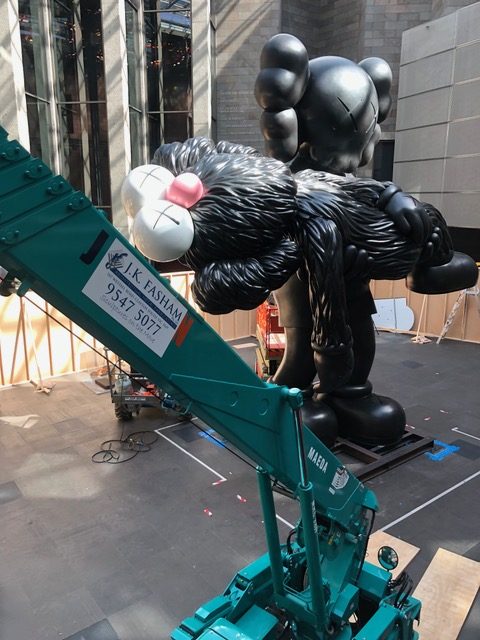Fibreglass Sculpture Fabrication: Material Innovation for Detailed, Easy-to-Install Public Art
08 May 2025
Transform public spaces using fibreglass sculpture fabrication by J K Fasham, delivering advanced material design and simplified installation.
Modern Approaches to Fibreglass Sculpture Fabrication
Contemporary techniques in fibreglass art fabrication have advanced far beyond traditional hand lay-up methods. CNC machining and digital moulding allow precise production that reduces inconsistencies while maintaining high-quality surface finishes.
Vacuum infusion has replaced many older practices, resulting in reduced waste, tighter resin control, and greater structural integrity. Robotic milling has enabled the creation of complex sculptural geometries previously considered impractical within short lead times.
New gelcoat technologies in fibreglass sculpture fabrication produce UV-resistant exteriors that retain aesthetic quality longer in exposed environments. Material layering also ensures greater adaptability in producing intricate, lightweight panels suited for public interaction.
Installation Ease through Fibreglass Sculpture Fabrication
Segmented pre-fabricated fibreglass elements reduce the need for heavy machinery on-site and accelerate final positioning in public environments. Modular connections help maintain clean joins while minimising delays during weather disruptions or uneven ground conditions.
Anchoring systems can be integrated within the core of each fibreglass component, allowing secure attachment to plinths or urban foundations. This not only improves stability but also reduces post-installation maintenance, streamlining project completion workflows.
Future Trends in Fibreglass Artwork Fabrication
• Bio-resin Composites: Incorporating bio-resins reduces environmental impact while retaining the material’s tensile properties. Future applications may favour these alternatives in civic-funded artwork to meet sustainability goals.
• Hybrid Composite Panels: Marrying fibreglass with carbon or basalt fibres increases strength without compromising weight. These hybrid panels support larger forms in architectural installations.
• Smart Surface Embedding: Light-responsive coatings and embedded sensors could introduce interactive elements, transforming public art into real-time experiential displays.
• Augmented Reality Integration: Future sculptures may include AR triggers that expand the narrative experience, blending physical structure with digital storytelling.
• On-site 3D Printing in Resin: Mobile printing units using fibreglass composites may soon allow direct fabrication on installation sites, eliminating transport limitations.
• Nano-coating for Self-cleaning Surfaces: Sculptures will maintain their finish longer using advanced self-cleaning coatings that resist grime and environmental degradation.
• Circular Manufacturing Processes: As closed-loop systems become standard, reusable fibreglass frameworks will support a shift toward resource-responsible production cycles.
Sculptural Continuity through Material Precision
Through collaborative efforts, J K Fasham remains committed to supporting sculptors from early concept scaling to full fabrication using custom fibreglass solutions. This material pathway enhances production continuity and ensures that artistic form meets engineered precision.
See our sculpture fabrication results that have redefined installation quality, artistic accuracy, and modular integration across Australia’s public spaces.
Learn more versatile materials used for sculpture fabrication with this blog: Sculpture Fabrication by J K Fasham: Common Materials Used for Sculptures
Discover more reasons to appreciate sculptured fibreglass artworks with this content: Fibreglass Sculptures: 7 Perfect Reasons Why You’ll Want One
Optimized by: Netwizard SEO


